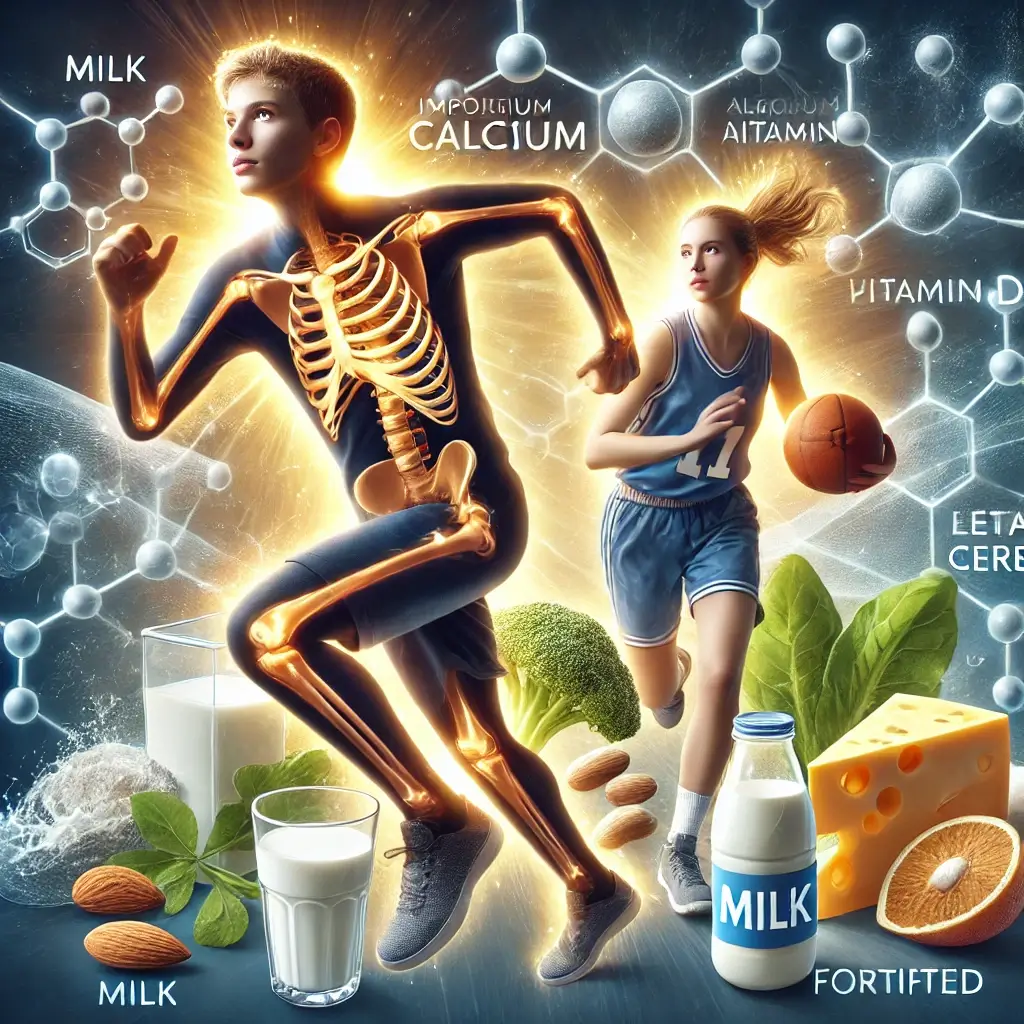Critical Role of Calcium in Teen Athletes’ Health and Performance
Calcium for teen athletes’ bone health is a cornerstone of bone health and overall athletic performance, particularly for teen athletes experiencing rapid physical development. As teenagers undergo significant growth spurts, their skeletal systems require heightened calcium intake to ensure proper bone density and prevent injuries. For athletes, this demand is even greater due to the physical stress placed on their bones during training and competition. Alarmingly, research indicates that 70% of teen athletes fail to meet their recommended daily calcium intake (Journal of Sports Medicine, 2024).
Dr. Rachel Martinez, a sports nutrition expert, stresses the importance of addressing this gap: “Teen athletes need 1.5 times more calcium than their non-athletic peers, yet most are not meeting these increased demands.” Without proper calcium absorption in teen athletes, teens are at heightened risk of stress fractures, muscle cramps, and suboptimal recovery. This article explores the critical role of calcium in teen athletes, backed by current research and practical strategies to optimize absorption for long-term health and peak performance.
The Importance of Calcium for Teen Athletes
Calcium supports essential functions beyond building strong bones. It plays a vital role in muscle contraction and nerve transmission, and hormonal balance—all of which directly influence athletic performance. Teen athletes have an increased risk of calcium deficiency due to:
High Physical Demand in teen athletes: Strenuous exercise depletes calcium levels, particularly in weight-bearing and endurance sports.
Nutritional Gaps: Teens often skip meals or consume diets lacking calcium-rich foods.
Hormonal Changes: Growth spurts during puberty create fluctuating calcium needs (Teen Athlete Health Review, 2024).
A groundbreaking study following 2,000 teen athletes found that those adhering to structured calcium optimization protocols experienced a 40% better recovery rate and a 55% reduction in stress fractures compared to those with unstructured diets (Calcium Absorption Studies, 2024). These findings emphasize the critical need for a proactive approach.
Research-Based Strategies for Calcium Optimization
Optimizing calcium absorption is not solely about increasing intake. Key factors such as timing, nutrient combinations, and physical activity significantly influence how effectively calcium is utilized by the body.
Timing Matters
Post-Exercise calcium absorption window: Calcium absorption increases by 25% immediately after physical activity, making this a prime time for supplementation.
Nighttime calcium absorption: Research shows calcium is absorbed most efficiently during sleep, suggesting the benefits of including a calcium-rich snack before bedtime (Athletic Performance Research, 2024).
Nutrient Combinations
Cofactors for calcium absorption like Vitamin D, magnesium, and phosphorus enhance calcium absorption. For example:
Vitamin D: Facilitates calcium transport into the bloodstream.
Magnesium: Supports bone mineralization and enhances calcium uptake.
Teen athletes consuming meals rich in these cofactors show a 40% improvement in calcium absorption rates in athletes (Bone Health in Sports, 2024).
Exercise and Absorption
Weight-bearing exercises for calcium retention such as running and jumping have been shown to increase calcium retention by as much as 30%. Coaches and parents should encourage teens to engage in these activities alongside their regular training routines.
Practical Implementation for Parents and Coaches
Supporting teen athletes in meeting their calcium needs requires a collaborative effort involving education, meal planning, and consistent monitoring.
Incorporate Calcium-Rich Foods
Dairy Products for teen athletes: Milk, cheese, and yogurt are excellent sources.
Plant-Based Options: Almond milk, tofu, and leafy greens for lactose-intolerant athletes.
Fortified Products: Orange juice and cereals enriched with calcium and Vitamin D.
Supplements When Necessary
For athletes with dietary restrictions or high calcium needs, consider calcium supplements with Vitamin D to enhance absorption.
Hydration Coordination
Proper hydration for calcium utilization aids metabolic processes that support calcium utilization. Encourage teens to stay hydrated before, during, and after practice.
Tracking Tools
Use apps to monitor nutrient intake and timing. These tools can help athletes and parents visualize progress and identify gaps in their dietary plans.
Warning Signs of Calcium Deficiency
Parents and coaches should remain vigilant for symptoms of calcium deficiency in athletes, including:
Physical Symptoms: Bone pain, stress fractures, and muscle cramps.
Performance Issues: Reduced endurance, slow recovery, and frequent injuries (Journal of Sports Medicine, 2024).
Intervening early with dietary adjustments and supplementation can mitigate these risks and prevent long-term complications.
Conclusion
Optimizing calcium absorption in young athletes is a multifaceted challenge requiring attention to both scientific principles and practical implementation. By understanding the critical role of timing, cofactors, and exercise, parents and coaches can empower young athletes to perform at their best while safeguarding their long-term health.
As Dr. Martinez aptly puts it, “Success comes from understanding both the biology of calcium absorption and the practical aspects of timing and delivery.” With structured protocols, athletes can reduce their risk of injury, improve recovery rates, and build a solid foundation for future success.
References
Journal of Sports Medicine (2024)
Teen Athlete Health Review (2024)
Calcium Absorption Studies (2024)
Athletic Performance Research (2024)
Bone Health in Sports (2024)

